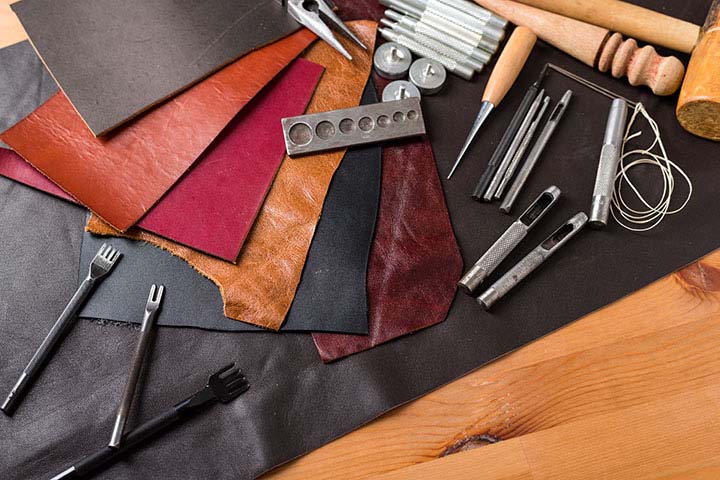
14 Feb How Do Traditional Saddlery Tools Adapt to Today’s Needs?
In the enduring craft of saddlery, tools play a pivotal role in creating durable, functional equestrian equipment that withstands the test of time and use. As we delve into the second part of our “Timeless Craft: Revolutionizing Leatherwork with Tradition” series, we explore the fascinating journey of traditional saddlery tools and their evolution to meet the demands of modern leatherwork.
The Evolution of Saddlery Tools
The history of saddlery tools is rich with innovation and craftsmanship. Key instruments like awls, pricking irons, and skiving knives, originally designed for the intricate demands of saddlery, have undergone significant advancements. Technological and material improvements have broadened their applicability, making them indispensable across a wider spectrum of leatherworking projects beyond their equestrian origins.
Meeting Modern Design Requirements
The landscape of equestrian sports and fashion has dramatically evolved, influencing not just the aesthetic but also the functional requirements of saddlery and related leather goods. Traditional tools have been thoughtfully adapted or redesigned to navigate these changes, allowing artisans to produce intricate details, work with diverse leather types, and maintain precision with every stitch, fulfilling contemporary design expectations.
Enhancing Efficiency and Precision
In today’s fast-paced world, efficiency in craftsmanship is more crucial than ever. Traditional saddlery tools have evolved, embracing ergonomic designs that minimize fatigue and boost precision. These modifications not only cater to the artisan’s comfort but also expedite the crafting process without sacrificing the quality of the finished product.
The Role of Craftsmanship in Modern Saddlery
Despite the advent of modern machinery, the essence of craftsmanship remains irreplaceable in saddlery and leatherwork. Traditional tools, when wielded by skilled artisans, result in products unparalleled in quality, durability, and aesthetic appeal, reinforcing the value of human touch in the creation process.
Traditional Tools in Contemporary Projects
Contemporary leather projects, ranging from bespoke saddles and tack to luxury leather bags and accessories, often rely on traditional saddlery tools. Modern artisans testify to the unmatched versatility and reliability these tools offer, underscoring their preference for traditional instruments in achieving superior craftsmanship.
Preserving Tradition While Embracing Innovation
The challenge lies in maintaining the integrity of traditional toolmaking techniques while integrating innovations that address modern requirements. Companies like C. S. Osborne exemplify this balance, providing tools that respect the legacy of traditional craftsmanship yet incorporate contemporary enhancements for improved performance.
Conclusion
Traditional saddlery tools have not merely survived the test of time; they have thrived, adapting to the needs of modern leatherwork without forsaking the core principles of craftsmanship. These tools serve as a testament to the symbiotic relationship between tradition and innovation, enabling artisans to weave the rich tapestry of history into their contemporary creations.
Embark on a journey of discovery with Osborne Leather Tools and experience the seamless blend of tradition and modernity in our collection of saddlery tools. Whether you’re a seasoned artisan or a budding enthusiast, these tools offer the perfect amalgamation of historical craftsmanship and contemporary utility. Visit our product pages, explore our tutorials, or sign up for workshops to dive deeper into the world of traditional tools reimagined for today’s leatherwork.


